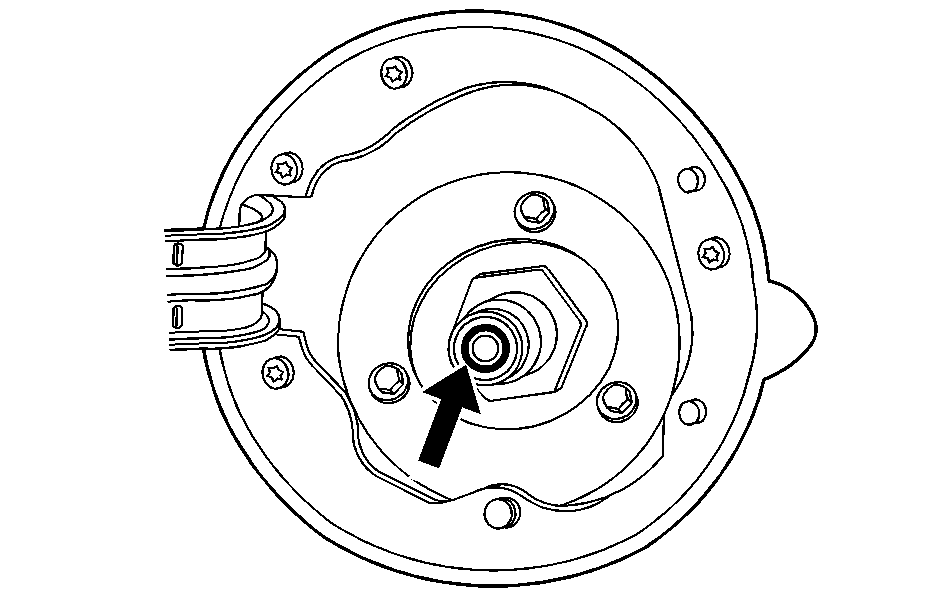Caution: Compressed Natural Gas (CNG) is extremely flammable. If something accidentally ignites it, you could be badly burned. Keep sparks, flames and smoking materials away from natural gas. Do not smoke if you are near natural gas or refueling your vehicle.
Caution: Compressed Natural Gas (CNG) is stored in the
fuel tank at pressures up to 3,600 psi (24.8 MPa) at 70°F (21°C). To prevent
personal injury:
• Never fill to a pressure greater than 3,600 psi (24.8 MPa) at 70°F
(21°C). • Never fill a leaking or damaged tank.

The fill valve is located behind the fuel fill door on the driver's side of the vehicle.
Because CNG is a gas, the amount stored in the CNG fuel tank depends on pressure and temperature. The CNG fuel system uses a service pressure of 3,600 psi (24.8 MPa) at 70°F (21°C). Many CNG fuel stations in the United States presently operate at this pressure. However, some stations in the United States and all stations in Canada presently operate at 3,000 psi (20.7 MPa). This lower refueling pressure will reduce the range of your vehicle by about 15%.
Also a "fast fill" station heats and expands the natural gas during refueling. A fast fill can reduce the range of your vehicle by about 15%. A vehicle refueled using a "slow fill" overnight dispenser is not subject to this condition and should receive a full fill.
Finally, some fast fill CNG fuel stations provide temperature compensated refueling. This means that the fuel station will automatically adjust refueling pressure if the outside temperature is very hot or very cold. For example, on a very hot day (100°F (38°C)), the fuel station may provide a refueling pressure of about 4,000 psi (27.6 MPa). This is normal and does not indicate a problem.
To fill your vehicle with CNG fuel do the following:
- Turn off the engine and set the parking brake.
- Open the fill door.
- Remove the fill valve cap and any debris from the fill valve.
- Inspect the fill valve O-Ring. Make sure the O-Ring is seated in the groove. Never connect the fill nozzle to the valve if the O-Ring is missing or damaged. See "Fill Valve O-Ring" under Part B: Owner Checks and Services .
- Connect the CNG fill nozzle to the fill valve and follow the instructions displayed on the fuel dispenser.
- When finished fueling, disconnect the fill nozzle, return it to the dispenser, put the fill valve cap back on and close the fill door.

Caution: Attempting to fill a Compressed Natural Gas (CNG) fuel system that has a missing or damaged O-ring is dangerous. Natural gas can leak. If the natural gas is accidentally ignited, you or others could be injured. Replace the O-ring before filling the tank.
